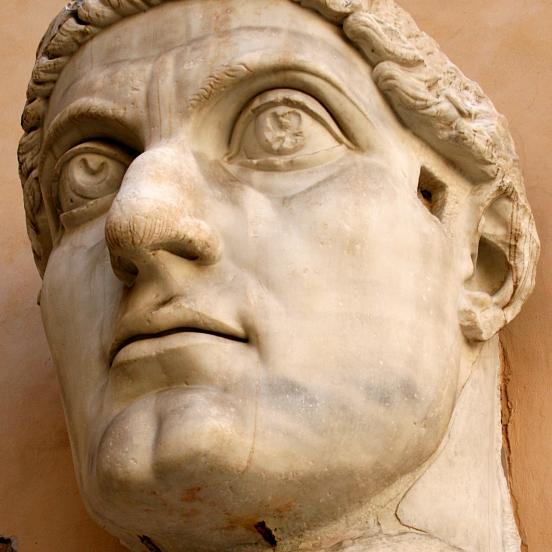The Colossus of Constantine I
The statue of Constantine I sitting on a throne and originally some 9-10 metres high is the most significant representation of an emperor known from the first half of the 4th century. The emperor had the colossus erected in Rome after his victory over his rival, Maxentius, in 312. He had a statue similar to representations of the chief Roman god Jupiter erected, which depicted him enthroned with a toga curled around his legs, bare-chested and a sceptre (sceptrum) in his hand. Only parts of the body that were uncovered by clothes were made of marble and a few fragments of those exist today. What most famously remained of the colossal portrait statue is the monumental nearly three-metre marble head. The toga was probably sculpted of bronze and not of marble. A diadem also made of metal and decorated perhaps with gems and gilding must have been fitted on his head – cuttings at the temples and in the hair refer to that.

